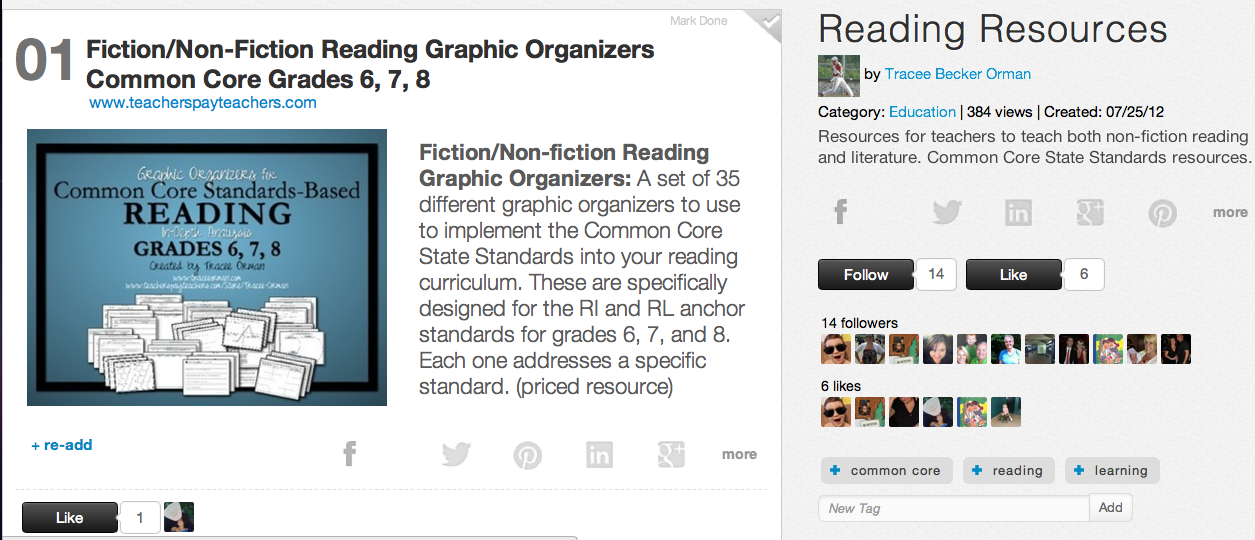
How Are Digital Platforms Disrupting Learning?
by Terry Heick
Media is becoming increasingly digitized, and we learn through, among other processes, consumption of media. It makes sense then that digital platforms just might be changing the way learning happens.
A “platform” can be defined as an app, a website, an eLearning environment, or a collaboratively curated content source.
6 Examples Of Digital Platforms
1. Apps: Phonics Genius, Frog Dissection, Google Earth
2. Websites: New York Times, Mashable,
3. Dynamic Platforms (often featuring user-generated content): iTunesU, Learnist, YouTube
4. eLearning Environments: Khan Academy, Coursera, MOOCs in general
5. Curated Content Sources (media collections): slideshare, Pinterest, YouTube
6. Social Media: twitter, reddit, facebook
The Disruption Part
By delivering diverse access, formats for play, intentional equity, and a subsequent power shift, digital platforms more than anything else disrupt formal learning processes—both the institutions such as like universities, and the organizations which funnel students their way.
But they also disrupt it in a social sense but altering the tone of knowledge, moving it from something strictly academic into a more useful, less pretentious, and more humble place. This can make “knowledge” and know-how a social currency rather than a lifeless academic evaluation.
1. Access

By design, these platforms provide access.
What the provides access to depends on the platform. Some, like Coursera, provide access to learning pathways, while Learnist provides access to crowdsourced learning sequence. Infographics, apps like Guardian Eyewitness, and RSS readers like Skygrid provide access to visual content.
Social media sites like pinterest and twitter provide access to people, ideas, and media forms. Same with YouTube, only the media is generally video clips, music, and short film.
eLearning sites like Udacity are designed to provide access to content aggregated and sequenced by learning experts, in a way that is designed to promote user interaction and “student-centeredness.” MOOCs hold that access as their defining characteristic—and when it is broadband access and not pre-requisites or financial resources—that dictates learning opportunities, disruption is already at work.
2. Play
Play is among the many sleeping giants in education.
This concept is easy to see at work in concepts like gamification, which apply encouragement mechanics and game-like features to otherwise non-game entities, like awarding badges for “checking in” with Four Square, a premise which essentially gamifies your physical movement (for what that’s worth.)
But on a more important level, play returns power to the learner, destroys passivity, and encourages macro design and function principles. It encourages students to play with ideas through experimentation, iteration, and collaboration, but puts them in control, and subsequently lights up a part of their consciousness that is dormant as long as they are operating under conditions of compliance.
3. Equity

Platforms like the Khan Academy, while still dependent on internet access and some kind of hardware, represent a different sort of equity than that achieved in the past.
While public education in countries in the United States is compulsory and inclusive, equity within curriculum and instruction has never been achieved, partly due to the overwhelming logistics of personalized learning, and partly due to cultural blind spots educators and the institutions they operate can suffer from. But when learners are given direct, unmitigated access to content, we come a step closer to true equity. How close depends on how you define the term.
4. Power Shift
As formal learning institutions struggle to reinvent themselves in the face of enormous technological and social change, a slight shift in power and credibility is perceptible. Digital platforms are humbling institutions by catering to the masses, and charging via micro-transactions rather than enormous financial burdens.
This creates a kind of entrepreneurship for learning, both financially and philosophically. Education startups are emerging everywhere, but more perhaps importantly learning is ditching its suite and tie for shorts and a hoodie (cue visual of Mark Zuckerberg).
This is a crucial development if there is to be any sort of modern enlightenment that rethinks information—how we access, share, use, and store it in increasingly digital and information-rich environments. Disruption is the catalyst for the pace and scale of the change, but it is a triangle of information, users, and platform developers that will fully realize what 21st and 22nd learning comes to be.
Image attribution aubrunalumniassociation
